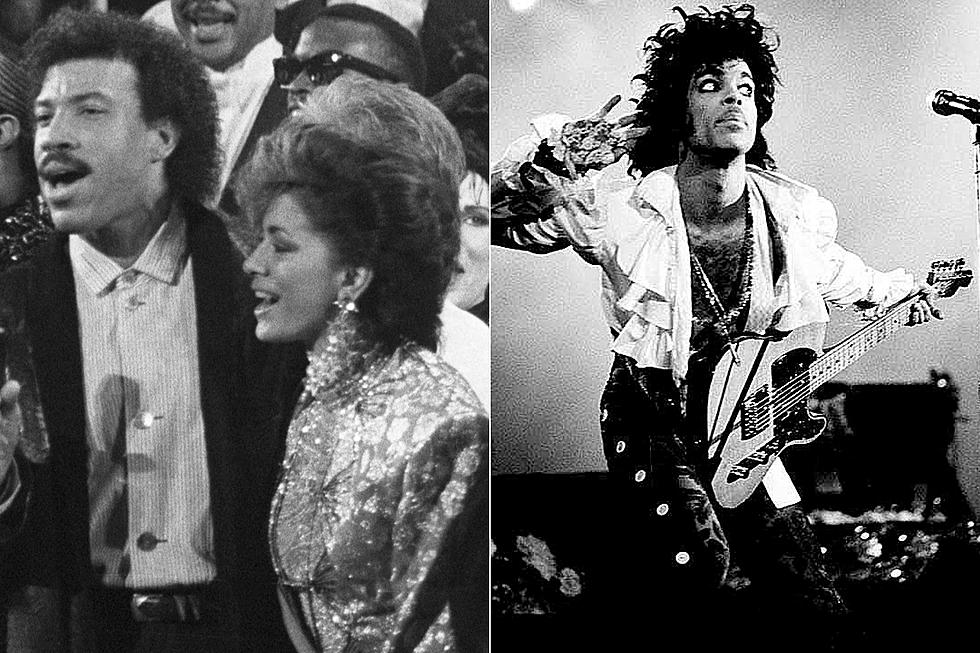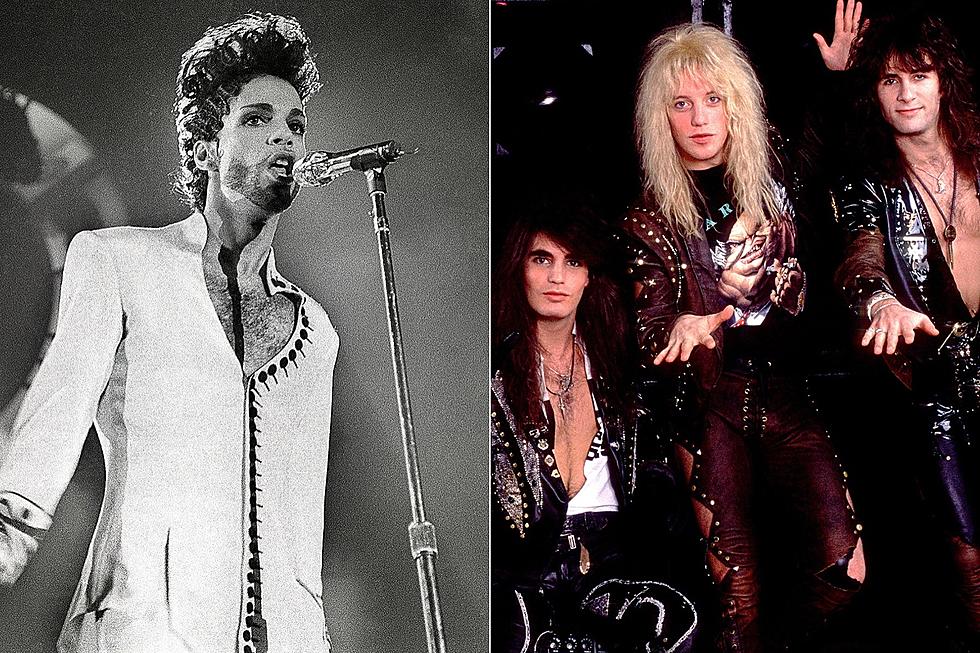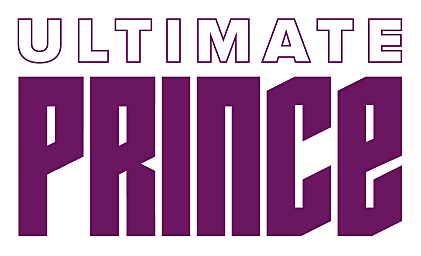
Why Did Prince Suddenly Shelve ‘The Black Album?’
Prince pulled The Black Album, a nasty slab of funky weirdness, only a week before its scheduled release on Dec. 8, 1987. That much is known. It's why that remains an enduring mystery.
Was it some sort of religious epiphany? A bad trip? A chance meeting with a new muse? The sudden realization that the album wasn't all that great? Fans have spent decades sorting through possible scenarios and never gotten any closer to discovering what actually happened behind the scenes. It's an R&B Rashomon.
Prince's shelved project was quickly replaced by Lovesexy, which he completed over the next few months after a chance meeting with poet and aspiring musician Ingrid Chavez. The Black Album wouldn't finally see the light of day until 1994, and then only for a limited run.
Warner Bros., though understandably reluctant to release new music so soon after Sign O' the Times, had already shared advance copies to U.K. dance-club DJs, reportedly to mixed opinions. (That might have been, in part, because Prince spent "Dead On It" incongruently trashing the hottest current musical trend, rap.) Engineer Susan Rogers didn't sound surprised by the lukewarm response. After all, in Prince: Life and Times, she described the album as nothing more than "odds and ends, things we would do on a day off. Sometimes, he wanted to break away and do something [different], just to get it out of his system."
Indeed, The Black Album grew out of a series of songs Prince recorded for Sheila E., another protege. Still, Prince's decision to call everything off had far-ranging logistical and financial ramifications.
Some 500,000 copies had already been pressed, meaning Prince's label would have to underwrite the destruction of a loading dock full of records it had just paid to manufacture. He'd already confused them by breaking up a career-making band, even going so far as to erase their contributions on already-completed songs. Prince's idea for new movie project (Graffiti Bridge, which would ultimately star Chavez) had also stalled.
He was, undoubtedly, in a dark place – and The Black Album gave voice to all of those emotions.
Originally dubbed The Funk Bible, it earned its entirely appropriate new nickname because of packaging that omitted the title, Prince's name, liner notes or other credits, and photos. He seemed to be intent on winning back some street cred among long-time fans who may have become frustrated with his crossover success. In fact, the tour booklet for Prince's follow-up album admitted that he'd "set out to silence his critics," specifically relying on the color black ("the strongest hue of them all") only to realize that he had allowed "the dark side to create something evil."
Then, everything changed. At least two members of Prince's entourage blamed a bad experience with ecstasy, apparently on Dec. 1, 1987, the same day he'd met Chavez at a club in wintry Minneapolis. Prince brought her back to Paisley Park, where they began the first of many searching discussions on things like faith, love and the meaning of life – then he suddenly summoned Susan Rogers. She arrived to find him in what she described as an altered state, and fled.
"I'm certain he was high," Rogers said in Prince: Inside the Music and the Masks. "His pupils were really dilated. He looked like he was tripping."
As the night went on, Prince has said he came to the sudden realization that releasing the often pissed off, occasionally violent The Black Album would be a terrible mistake. Though she clearly had a sweeping impact on his mindset, Chavez said she wasn't privy to this internal struggle.
"Prince and I talked about a lot of things after [Rogers] left," Chavez told Fifteen Minutes With in 2016. "He did end up cancelling The Black Album, but I didn’t know anything about that record at the time. All I knew was that it got cancelled."
Bodyguard Gilbert Davison, who was present, reportedly told long-time Prince keyboardist Matt Fink that Prince "had a bad trip, and felt that [The Black Album] was the devil working through him." Their boss would neither confirm nor deny having taken drugs, only admitting in a 1995 talk with NME that he was "interested in all experiences."
Prince was similarly oblique about his decision-making process that night. "A lot of things happened, all in a few hours," he says in Prince: Inside the Music and the Masks. Chief among them, he said, was a visit from God. "And when I talk about God, I don't mean some dude in a cape and beard coming down to Earth. To me, he's in everything, if you look at it that way." Alan Leeds, Prince's former tour manager and later the president of Paisley Park Records, added that "some voice told him, 'Don't release that record.'"
Whatever happened, Prince said he began to really consider his personal legacy. "I was very angry a lot of the time back then," he told Rolling Stone in 1990, "and that was reflected in that album. I suddenly realized that we can die at any moment, and we'd be judged by the last thing we left behind. I didn't want that angry, bitter thing to be the last thing."
Later, the Lovesexy tour booklet referred to this date as "Blue Tuesday." Prince immediately contacted Warner Bros. chairman Mo Ostin and insisted that The Black Album be mothballed. "Prince was very adamant and pleaded with Mo," label executive Marylou Badeaux said in Prince: Inside the Music and the Masks.
"I heard accounts of that evening that he'd gotten on the phone with producers," Chavez told Rolling Stone in 2016, "and [he] said, 'I've met an angel,' and stopped work on The Black Album."
He remained adamant, for a lengthy period of time, about keeping the album off store shelves. He even included a hidden message in the video for "Alphabet Street," which said "Don't buy The Black Album, I'm sorry." Yet, because promotional copies had already been distributed, the record became widely bootlegged anyway. Major music publications even reviewed The Black Album.
Prince's commercial fortunes continued to slide, however, even with a sunnier stand-in project. Since both Purple Rain and then Around the World in a Day topped the U.S. charts in 1984-85, Prince albums had finished at No. 3 (1986's Parade), No. 6 (1987's Sign O' the Times) and then No. 11 (1988's Lovesexy).
The question of whether The Black Album would have provided any immediate commercial impetus remains, of course, unanswered. Initially traded illegally, its time had passed once Warner Bros. finally released the project years later. That's a shame, Leeds said in Prince: Life and Times, since The Black Album could have been "a turning point, for better or worse, at a time when he needed one."
Prince's Bandmates: Where Are They Now?
More From Ultimate Prince










